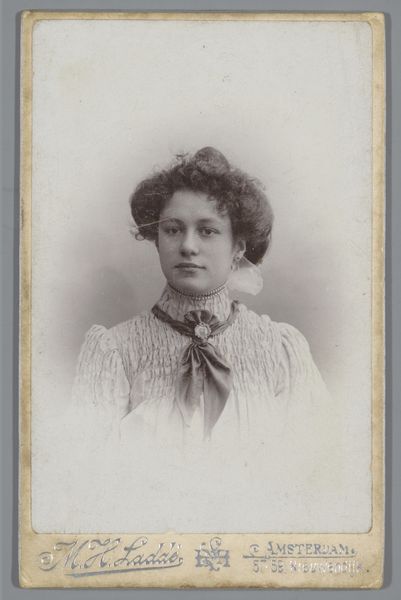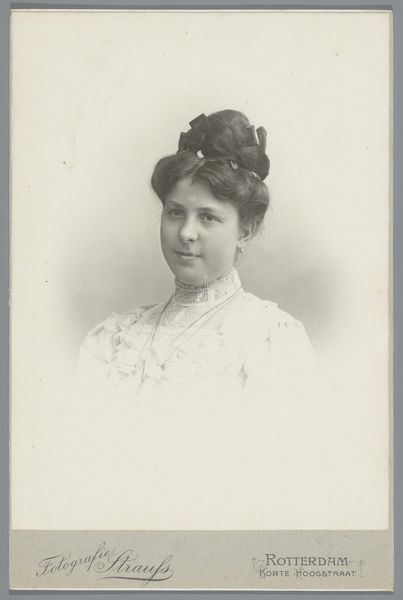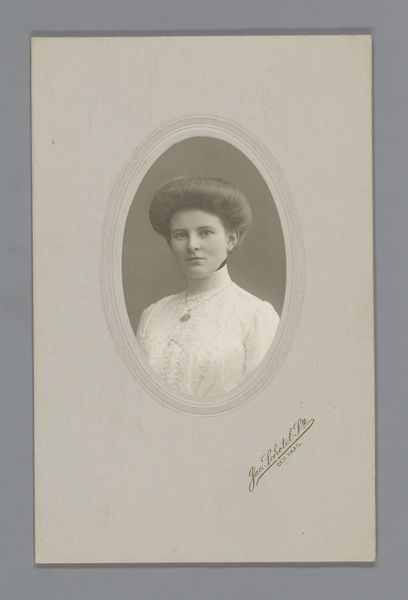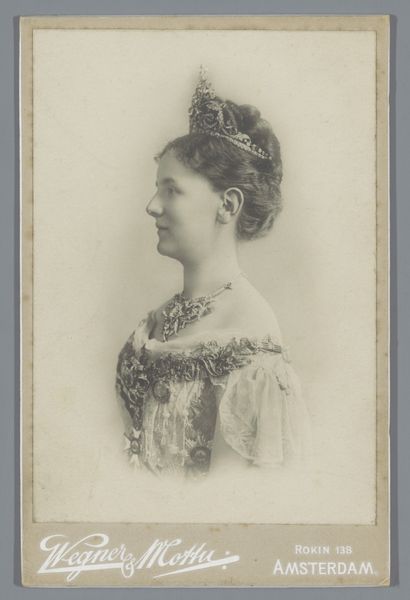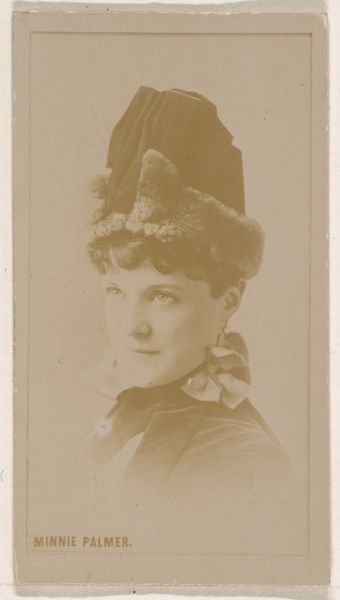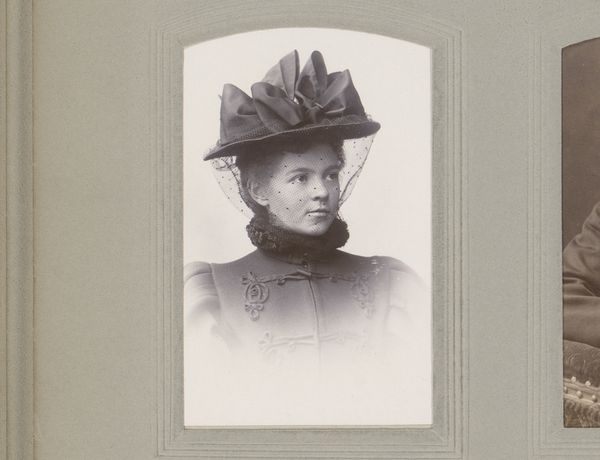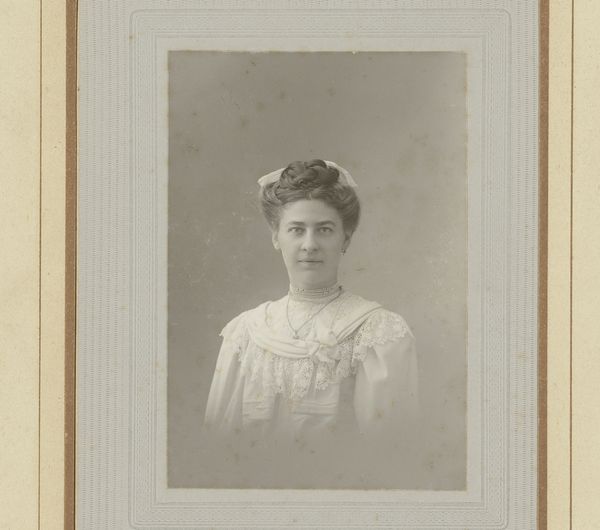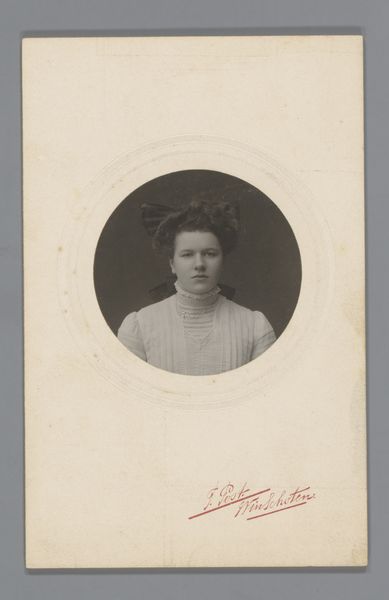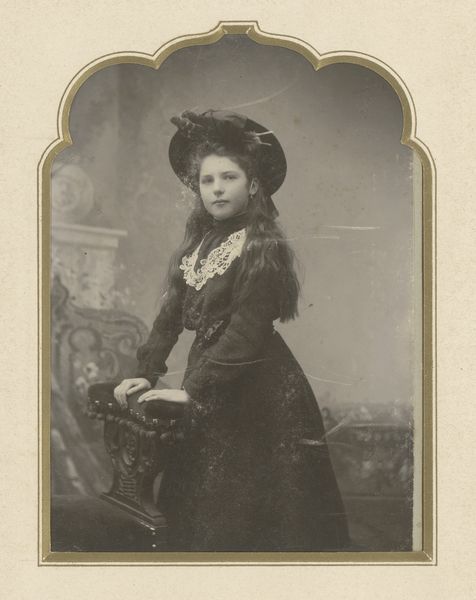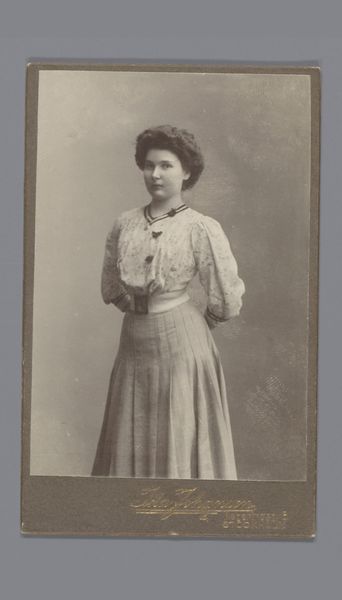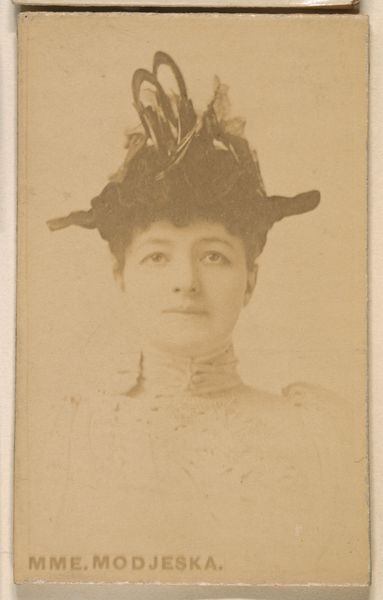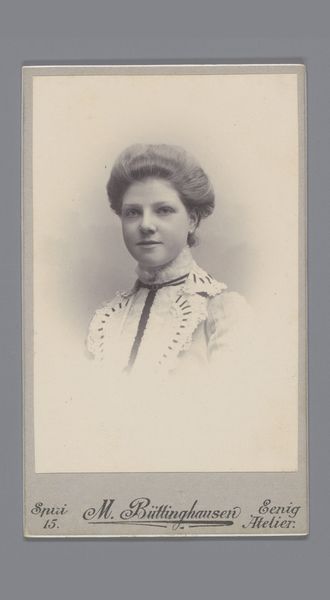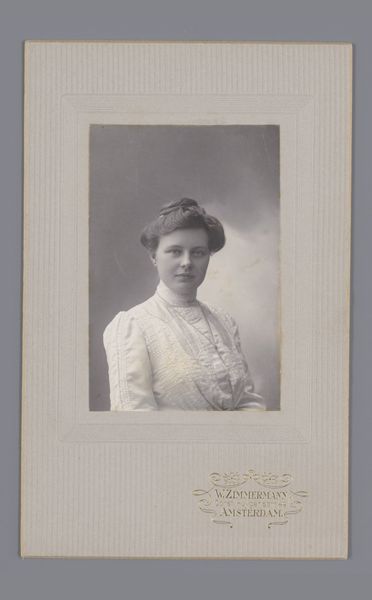
photography, gelatin-silver-print
#
portrait
#
photography
#
gelatin-silver-print
#
early-renaissance
#
realism
Dimensions: height 87 mm, width 56 mm
Copyright: Rijks Museum: Open Domain
Editor: So this is “Portret van een onbekende vrouw,” a gelatin-silver print from somewhere between 1910 and 1920, by P. Steensma. There's something about her gaze, so direct and almost challenging. How do you interpret this portrait, considering the time it was made? Curator: I think you've nailed something crucial already – that gaze. Considering the timeframe, we must look at the burgeoning women’s rights movements. This portrait, in its stark realism, refuses the male gaze that often objectifies women. It’s almost confrontational, yes, but also speaks volumes about a woman claiming her space and identity in a society trying to box her in. Do you notice anything else that contributes to that sense of self-possession? Editor: Maybe her clothing? The lace and large hat suggest a certain status, but it's not overly embellished. It's elegant, but almost... functional? Curator: Exactly! The adornment is subtle, perhaps suggesting she's participating in societal expectations of femininity, but on her own terms. Think of the "Gibson Girl" archetype versus this woman's self-contained presence. This portrait seems to ask, what does it mean to be a woman defining herself within those societal pressures, yet apart from them? It brings to mind early feminist manifestos – challenging, questioning. The power is not in ostentatious display but in the quiet assertion of being. Editor: That makes so much sense. I was focusing on the face, but the clothing really underscores that message of quiet defiance. Curator: It’s about understanding how every element contributes to a larger narrative about identity. Considering that P. Steensma was a commercial photographer in Amsterdam, it raises more questions than answers about the woman's identity. Does "unknown" inherently rob agency or inadvertently preserve it by obscuring potential social constraints and stereotypes of that era? Editor: I'm definitely going to look at portraits differently now, thinking about the social context and the choices the subject, or even the photographer, might have been making. Curator: Precisely! And to remember that every portrait holds within it silent dialogues of resistance, assertion, and identity.
Comments
No comments
Be the first to comment and join the conversation on the ultimate creative platform.
